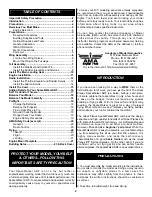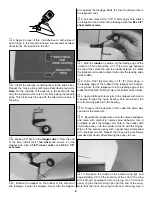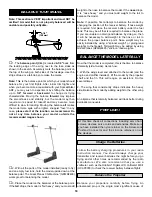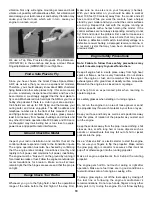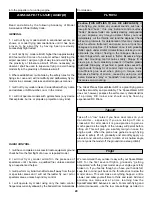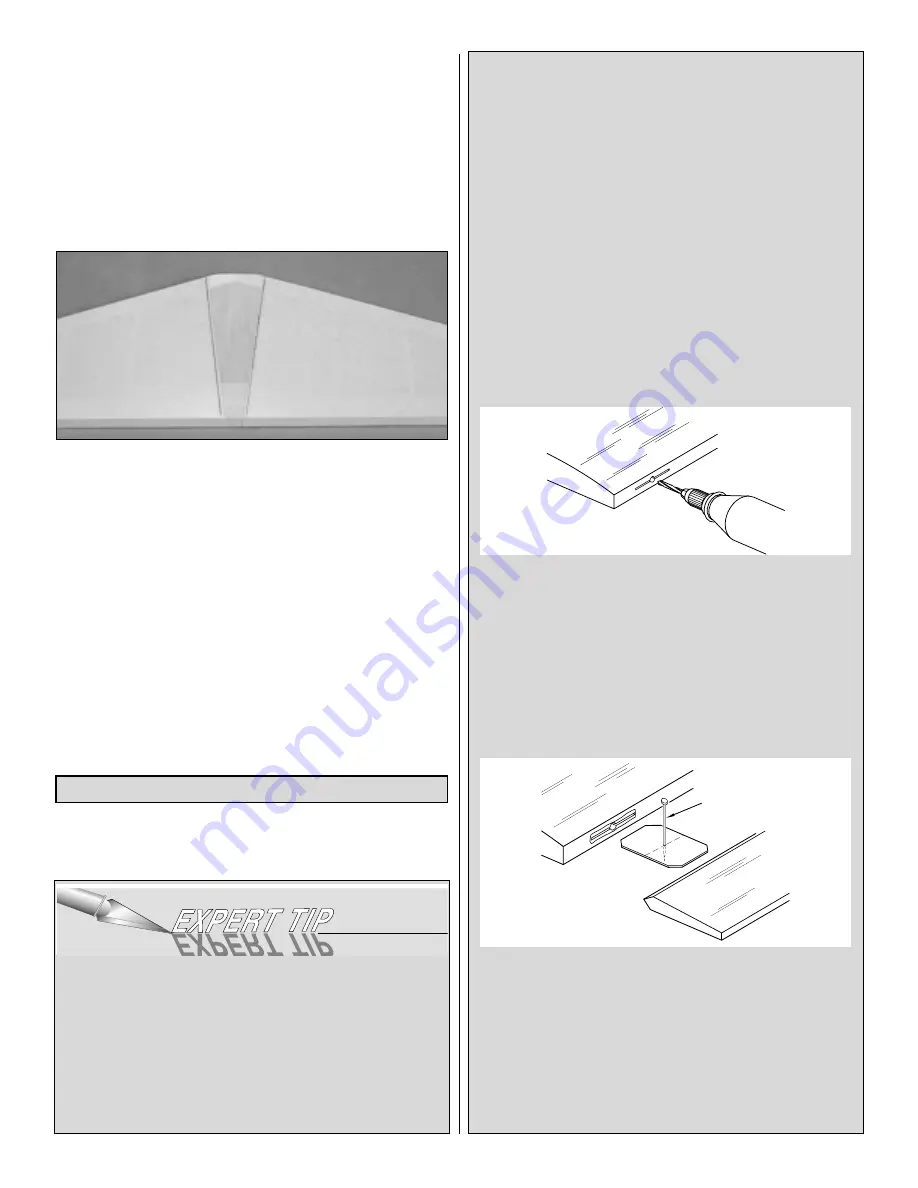
Stretch the string to one corner of the stabilizer. Repeat the
procedure on the other side of the stabilizer. Adjust the
angle of the stabilizer until the distance from the pin to the
stabilizer is
equal
on both sides. With the wing installed,
sight the aft end of the plane from 8' to 10' back. If the
stabilizer is not parallel to the wing, carefully sand the high
side of the stabilizer slot.
❏
3. Carefully use a felt-tip pen to mark where the fuselage
sides contact the top and bottom of the stabilizer.
❏
4. Remove the stabilizer from the fuselage. Carefully
trim the covering from inside the marks.
Important:
You
must not cut into the wood, as this will weaken the stabilizer
which may cause it to break in flight.
❏
5. Apply 30-minute epoxy to the bare wood at the center
of the stabilizer. Insert the stabilizer back into the stabilizer
slot. Use the pin and string method to confirm the stabilizer
alignment. Wipe off any excess epoxy before it cures, then
recheck alignment.
❏
6. Test fit the vertical fin in the fin slot. Use a Hobbico
Builder’s Triangle to ensure that the fin is
perpendicular
to
the stabilizer. Use 30-minute epoxy to glue the fin to the
stabilizer and fuselage. Hold the fin in position with masking
tape until the epoxy cures.
❏
1. You may need to cut the covering from the hinge slots
in the elevator and stabilizer.
INSTALLING CA HINGES
The hinge material supplied in this kit consists of a
3-layer lamination of mylar and polyester. It is specially
made for the purpose of hinging model airplane control
surfaces. Properly installed, this type of hinge provides
the best combination of strength, durability and ease of
installation. We trust even our best show models to
these hinges, but it is essential to install them correctly.
Please read the following instructions and follow them
carefully to obtain the best results. These instructions
may be used to effectively install any of the various
brands of CA hinges.
The most common mistake made by modelers when
installing this type of hinge is not applying a sufficient
amount of glue to fully secure the hinge over its entire
surface area; or, the hinge slots are very tight, restricting
the flow of CA to the back of the hinges. This results in
hinges that are only “tack glued” approximately 1/8"
[3.2mm] to 1/4" [6.3mm] into the hinge slots. The
following technique has been developed to help ensure
thorough and secure gluing.
Drill a 3/32" [2.4mm] hole, 1/2" [12.7mm] deep, in the
center of the hinge slot. If you use a Dremel Moto-Tool
™
for this task, it will result in a cleaner hole than if you use
a slower speed drill. Drilling the hole will twist some of
the wood fibers into the slot, making it difficult to insert
the hinge, so you should insert a knife blade, working it
back and forth a few times to clean out the slot.
It is best to leave a very slight hinge gap, rather than
closing it up tight, to help prevent the CA from wicking
along the hinge line. Make sure the control surfaces will
deflect to the recommended throws without binding. If
your hinge slots are cut too deep, the hinges may slide
in too far, leaving only a small portion of the hinge in the
control surface. To avoid this, you may insert a small pin
through the center of each hinge before installing. This
pin will keep the hinge centered while you install the
control surfaces.
TEMPORARY PIN
TO KEEP HINGE
CENTERED
DRILL A 3/32" HOLE
1/2" DEEP, IN CENTER
OF HINGE SLOT
Install the Rudder, Elevators and Ailerons
8


